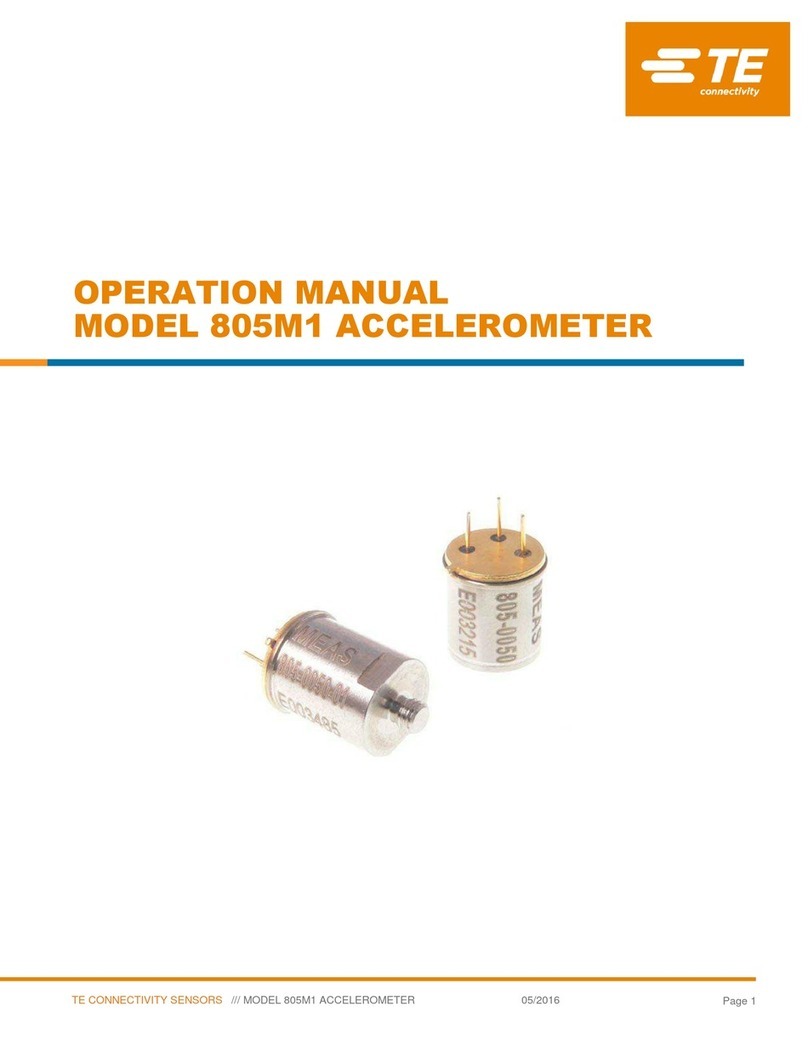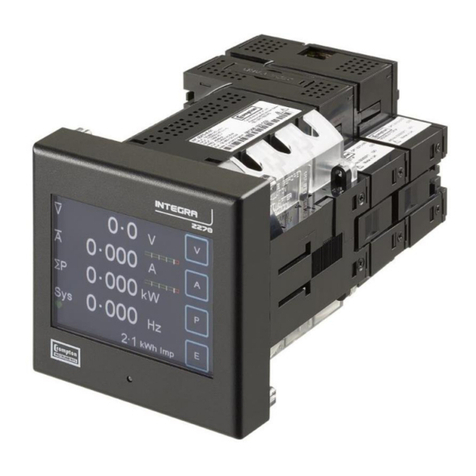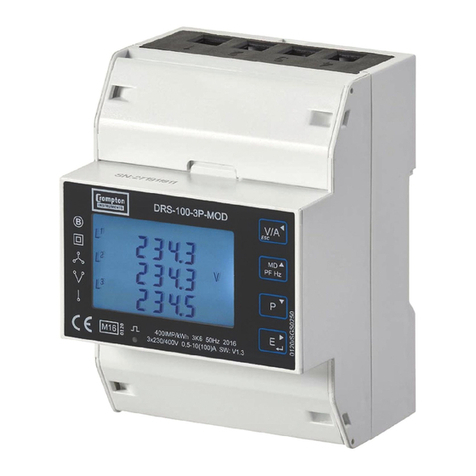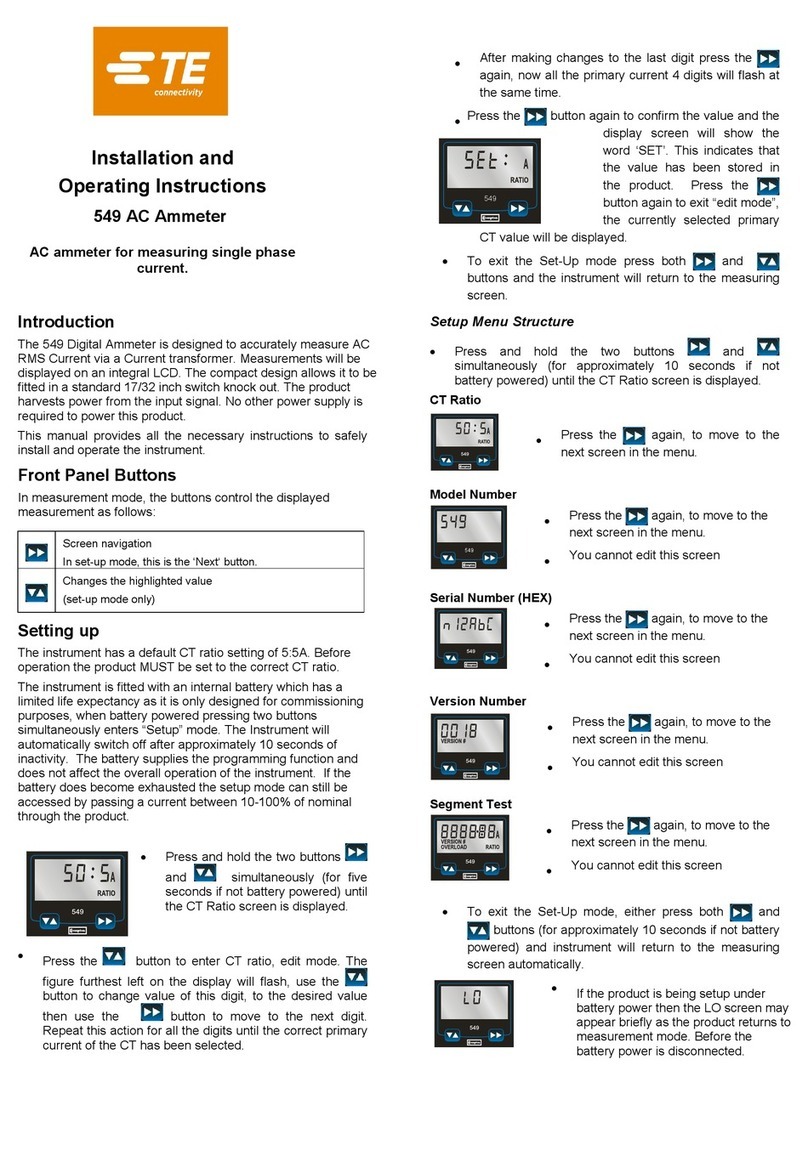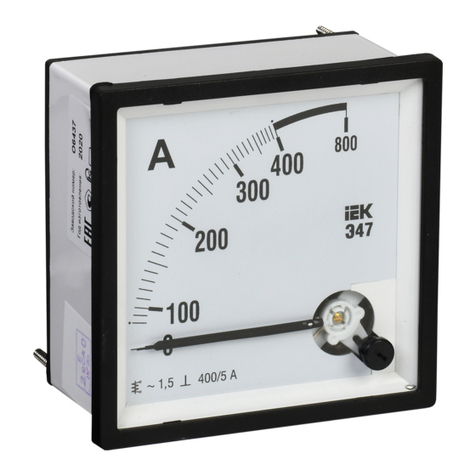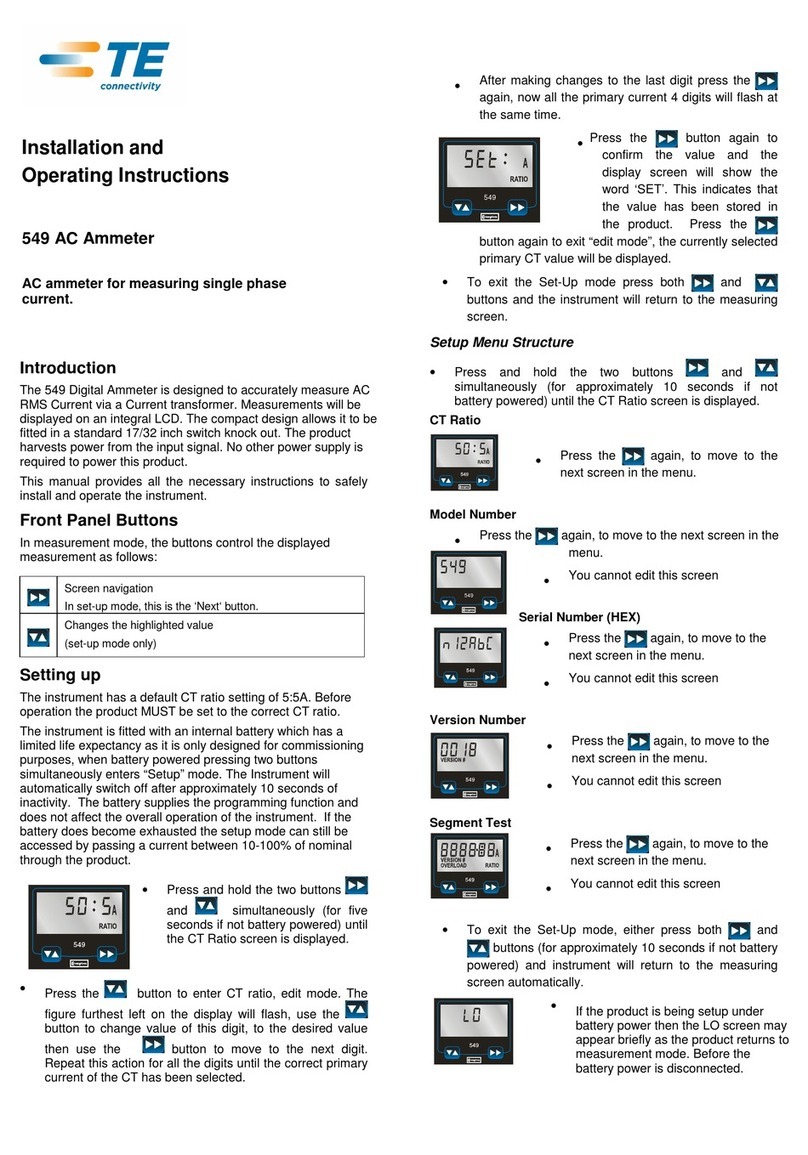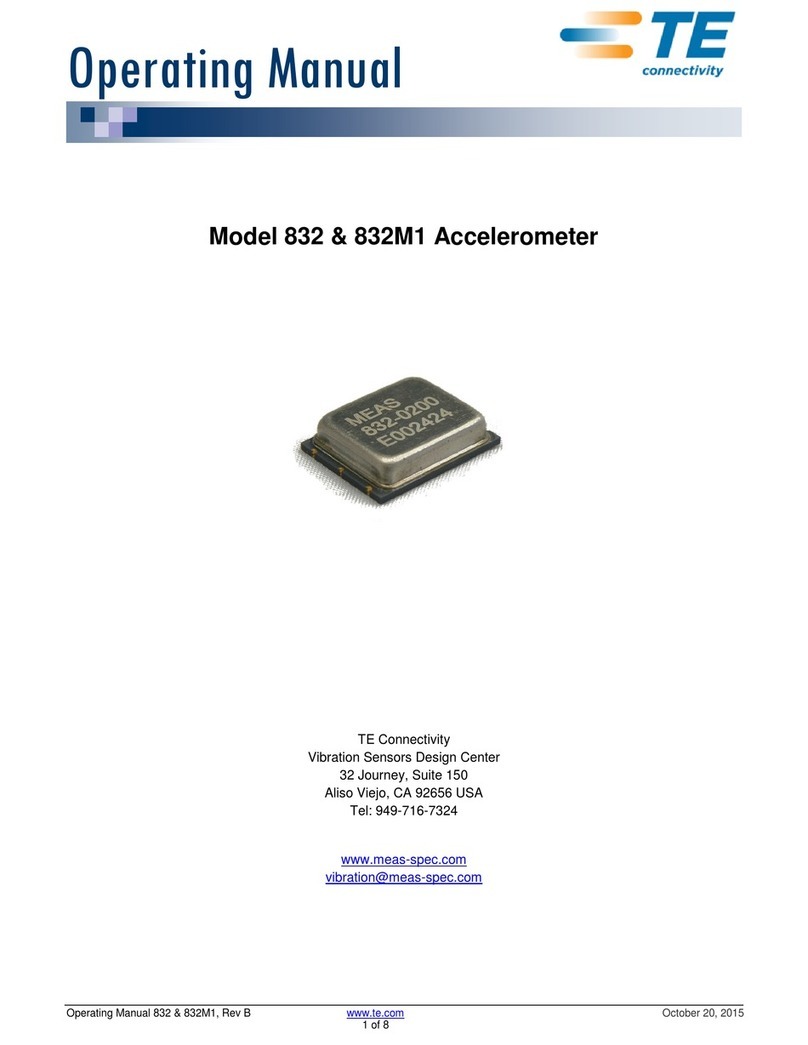Installation
Case Dimensions:
Width 71·3 mm, Depth 57·5 mm, Length 90·5 mm
Length including fixing tag 93·5 mm.
The unit is intended for mounting on a standard DIN rail within a
suitable metallic or flame proof enclosure (IP2X minimum) such that
only the front face (display) can be accessible in normal use. Avoid
mounting the unit where there is excessive vibration; in excessive
direct sunlight; or outside a reasonably stable ambient temperature
of -10 to +55°C
Safety
The unit is designed in accordance with BS EN 61010-1:2001
(IEC 61010-1:2001) –Permanently connected use, Normal
condition. Installation category III, pollution degree 2, basic
insulation for rated voltage. Measurement Category III.
EMC Installation Requirements
Whilst this unit complies with all relevant EU EMC (electro-magnetic
compatibility) regulations, any additional precautions necessary to
provide proper operation of this and adjacent equipment will be
installation dependent and so the following can only be general
guidance:
Avoid routing wiring to this unit alongside cables and
products that are, or could be, a source of interference.
The auxiliary supply to the unit should not be subject to
excessive interference. In some cases, a supply line filter
may be required.
To protect the product against incorrect operation or
permanent damage, surge transients must be controlled.
It is good EMC practice to suppress transients and surges
at the source. The unit has been designed to
automatically recover from typical transients; however in
extreme circumstances it may be necessary to temporarily
disconnect the auxiliary supply for a period of greater than
5 seconds to restore correct operation.
Screened communication leads are required. These and
other connecting leads may require the fitting of RF
suppression components, such as ferrite absorbers, line
filters etc., if RF fields cause problems.
It is necessary to wind the three current inputs through
separate ferrite rings an example part number Wurth 742
701 110, a minimum of 6 times.
It is good practice to install sensitive electronic instruments
that are performing critical functions in EMC enclosures
that protect against electrical interference causing a
disturbance in function.
Wiring
Input connections are made to screw clamp terminals. Choice of
cable should meet local regulations for the operating voltage and
current. Terminals are suitable for Copper wire only, 0.05-2.5mm²
(30-12AWG). Recommended tightening torque 0.5/0.6Nn (4.4/5.3
Lbf in) For UL approved installations wiring should conform to
National Electrical Code (NEC) Class 1, rated 600V / 60°C
minimum.
The current inputs of these products are designed for
connection into systems via current transformers only,
conforming to IEC 60044-1 or ANSI / IEEE C57.13
All negative current inputs are commoned inside the unit and
grounding should be at one point only. To minimise measurement
errors, the CTs should be grounded as shown in the wiring
diagram.
CT secondaries must be grounded in accordance with local
regulations. It is desirable to make provision for shorting links to be
made across CTs to permit easy replacement of a unit should this
ever be necessary.
Additional considerations for three wire systems
The neutral terminal (terminal N) is indirectly connected to the
voltage input terminals (terminals L1, L2, L3). When connected to
a three wire system the neutral terminal will adopt a potential
somewhere between the remaining lines.
If external wiring is connected to the neutral terminal it must be
connected to either the neutral line or earth (ground) to avoid the
possibility of electric shock from the neutral terminal.
Danger: Risk of Elecric Shock
During normal operation, voltages hazardous to life may
be present at some of the terminals of this unit.
Installation and servicing should be performed only by
qualified, properly trained personnel abiding by local
regulations. Ensure all supplies are de-energised before
attempting connection or other procedures.
Terminals should not be user accessible after installation
and external installation provisions must be sufficient to
prevent hazards under fault conditions.
This unit is not intended to function as part of a system
providing the sole means of fault protection - good
engineering practice dictates that any critical function be
protected by at least two independent and diverse
means.
The unit does not have internal fuses therefore external
fuses must be used for protection and safety under fault
conditions.
Never open-circuit the secondary winding of an
energised current transformer.
This product should only be operated with the CT
secondary connections earthed.
If this equipment is used in a manner not specified by the
manufacturer, protection provided by the equipment may
be impaired.
Auxiliary circuits (communication & relay outputs) are
separated from metering inputs and 110-400V supply
circuits by at least basic insulation. Any equipment
connected to these auxiliary circuits that may be
accessible in normal use, should provide supplementary
insulation rated 400Vrms minimum between auxiliary
circuits and any accessible parts, such that at least basic
insulation is maintained under fault conditions. The
connection at the remote end of such auxiliary circuits
should not be accessible in normal use. Depending on
application, equipment connected to auxiliary circuits
may vary widely. The choice of connected equipment or
combination of equipment should not diminish the level
of user protection specified in the end use application.
